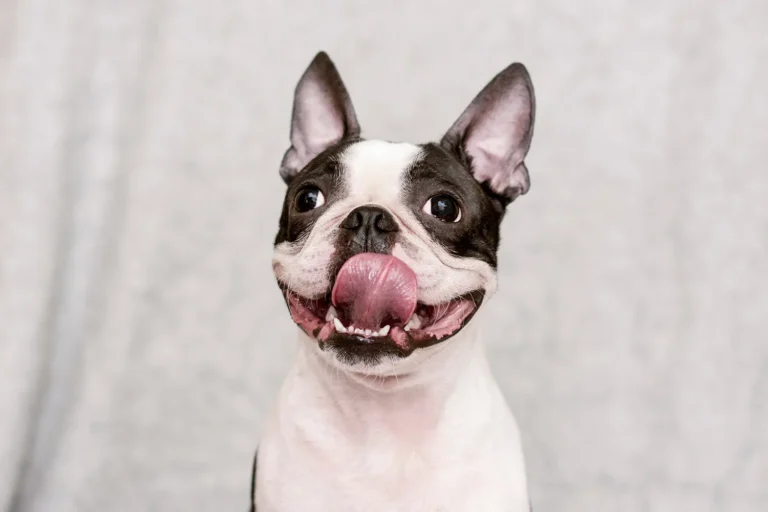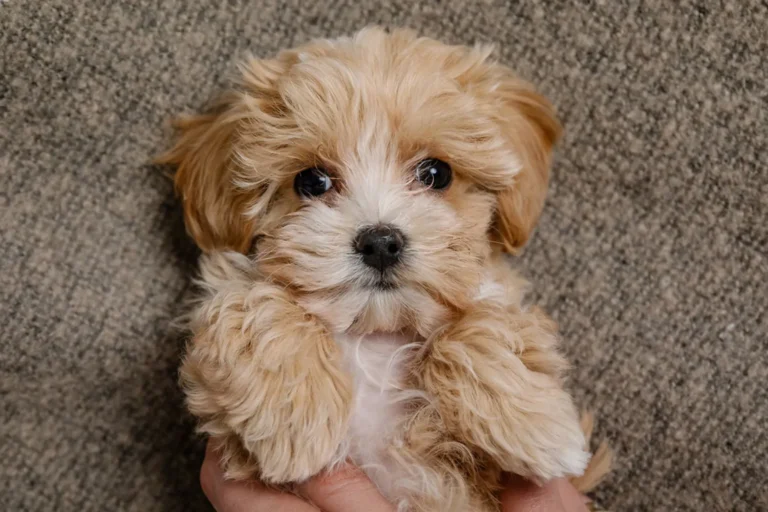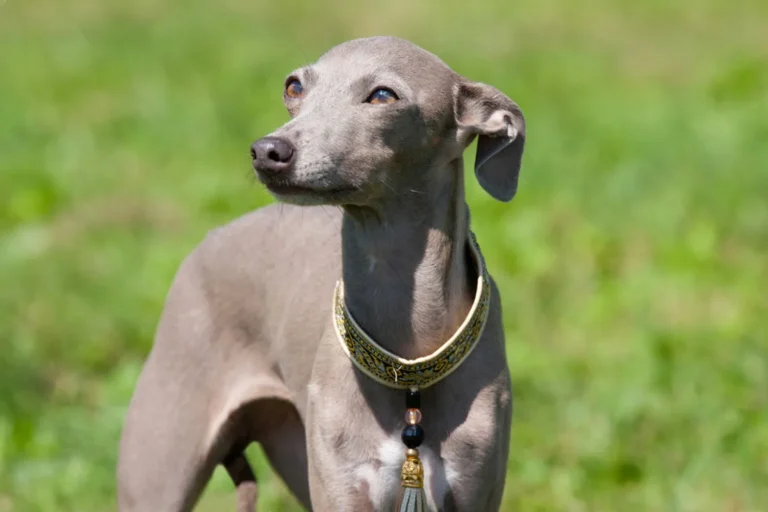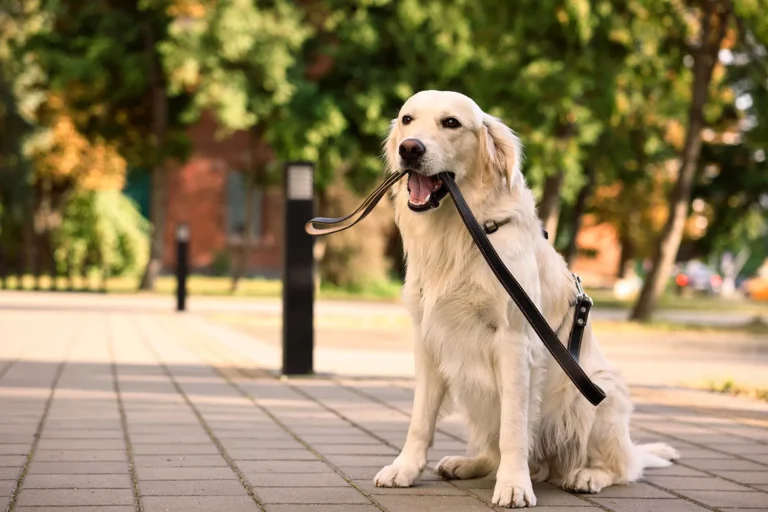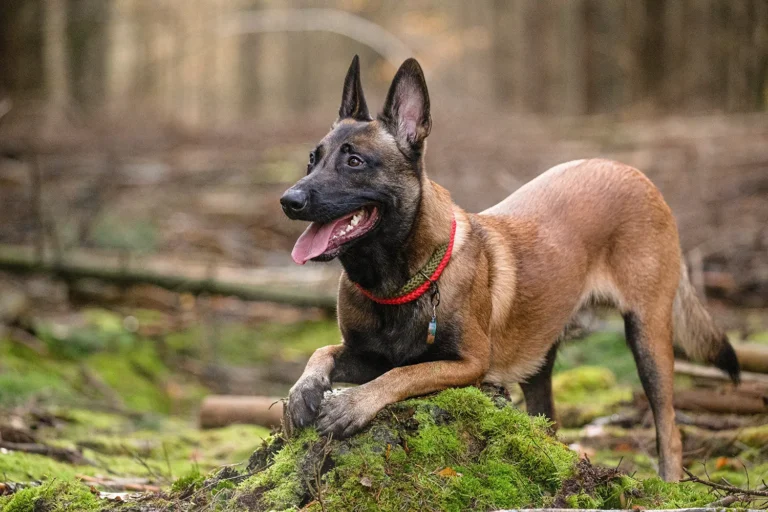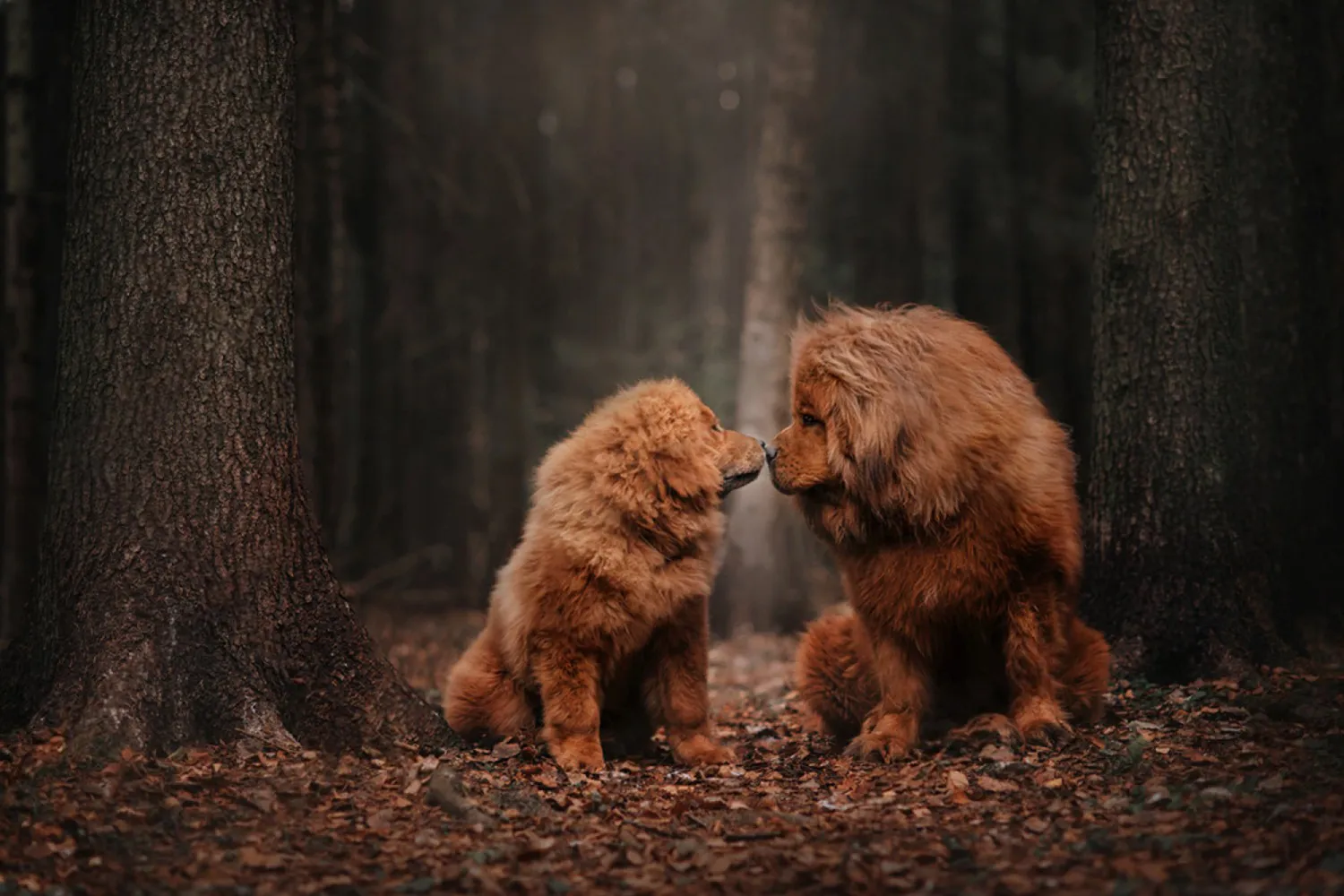
Born in the Himalayan Mountains, Tibetan Mastiffs are massive, calm guardians. The first one I met sat like a furry statue; when his owner nodded, he leaned into my knees quiet, solid, protective.
With good training, they’re not just dependable watchdogs but loyal friends and yes, capable service dogs. Think carrying a pack or fetching items. Start early with socialization, clear rules, a secure yard, and regular brushing.
History and Origins of the Tibetan Mastiff
Picture the winds sweeping across Tibet’s Himalayan plateaus around 1100 BC, and you’ve got the setting where the Tibetan Mastiff took shape. These dogs grew up alongside nomads and mountain communities, bred to be sturdy, independent, and brave enough to stare down wolves in the dark. For centuries they really were a treasure of their homeland, little known outside Tibet until the mid-1800s, when a few made their way to England and caused quite a stir. I like to imagine Victorian dog lovers seeing one for the first time massive, lion like, and carrying themselves like old souls.
Guardianship isn’t just what Tibetan Mastiffs do; it’s who they are. In traditional communities, they were turned loose at night to patrol camps and villages, and that habit stuck. It’s completely normal for a Tibetan Mastiff to nap through the day, then come alive at dusk with a deep, rolling bark that seems to bounce off the hills. I once dog sat a Tibetan Mastiff named Norbu, and like clockwork at 2 a.m. he’d perform a slow, serious perimeter check of the yard. He wasn’t anxious just on duty.
If you’re drawn to the breed, know that their fierce protectiveness is both their gift and their challenge. They bond hard with their family and take guarding the home personally. That means they need an owner who’s confident, patient, and proactive about training. Early and ongoing socialization is non negotiable: calm introductions to visitors, controlled exposure to different places and sounds, and clear household rules. I’ve found evening exercise helps take the edge off that nighttime energy, and teaching a solid “quiet” cue pays dividends when the shadows start getting interesting. A trainer experienced with guardian breeds can be a lifesaver this is not a dog you want learning bad habits.
A breeder I once spoke with in California laughed and said, “These dogs clock in at sunset.” He wasn’t wrong. With the right structure secure fencing, steady routines, and thoughtful socialization the Tibetan Mastiff is a majestic partner: dignified, loyal, and deeply devoted. Without it, they can become too intense for the average household. Handle that ancient instinct with respect, and you’ll have a guardian who feels like part of the land itself, even if your “territory” is a quiet suburban yard.

What Is a Tibetan Mastiff?
The first time I met a Tibetan Mastiff at a park, I honestly thought someone had brought a small lion on a leash. That massive, lion like mane is their calling card, framing a broad head and making their already impressive size feel even more majestic. This breed is one of the larger ones, wrapped in a thick double coat that means business: a coarse, protective top layer and a soft, woolly undercoat for serious insulation. Their feathery tail curls confidently over the back like a fluffy flag that matches the drama of the mane.
Their coloring can be striking, too. You’ll often see rich shades from silver to mahogany highlighting the eyes, nose, neck, legs, and tail, as if someone carefully brushed on accents to bring out their features. Up close, you can feel the contrast the guard hairs are sturdy and coarse, while the undercoat feels like soft fleece. One of my friends has a Tibetan Mastiff with warm mahogany markings around the eyes, and I swear it looks like the dog is wearing perfectly applied eyeliner.
Grooming these beauties takes a little routine. I like a weekly brush to keep that dense coat neat, and during shedding seasons when the undercoat “blows” and tufts float around like tumbleweeds I switch to an undercoat rake and add an extra session or two. Check behind the ears, under the mane, and along the tail for sneaky mats. A tip from experience: don’t shave a double coat; it can mess with how the fur protects and cools them. A good bath now and then is fine, but not too often let that coat do its job.
Fun fact to impress your dog park pals: the American Kennel Club officially recognized the Tibetan Mastiff in 2007. Big, bold, and unforgettable, they look like royalty wrapped in fur and yes, you will need a lint roller in every room.
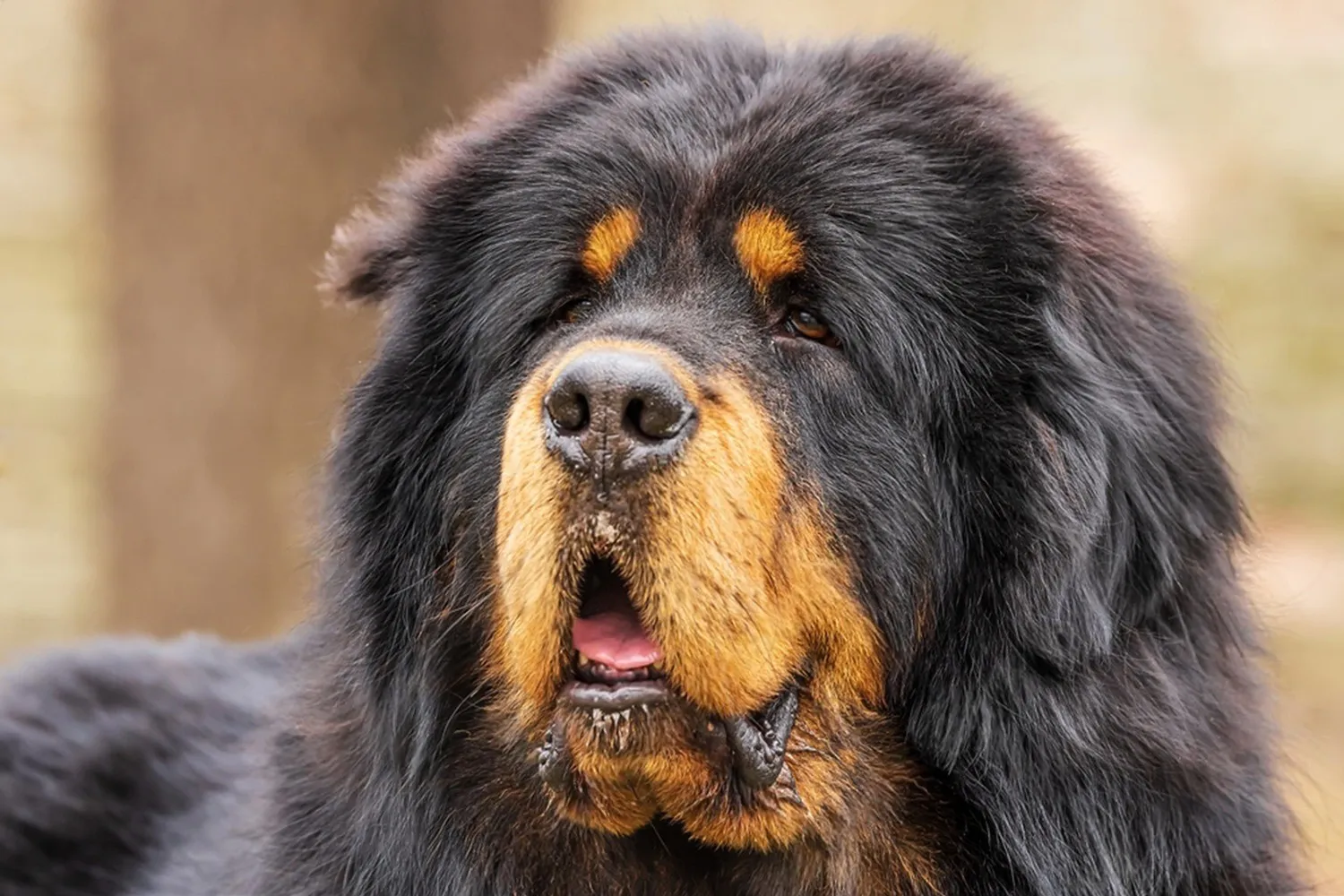
Who Is a Tibetan Mastiff Best For?
The Tibetan Mastiff is a breathtaking guardian with a soft side for their people, but they’re not a match for someone new to dog ownership. They do best with an experienced, confident handler who can set clear boundaries with kindness, firmness, and consistency never force. Think calm leadership, not drill sergeant. They’re independent thinkers who like to make up their own minds, yet they thrive when life follows a steady routine. Mine loved knowing that mornings meant a quiet walk, afternoons were for naps, and evenings were for a slow patrol of the yard before settling in.
Lifestyle matters with this breed. They’re happiest in a home that’s steady, predictable, and not chaotic, ideally with a securely fenced yard and an owner who enjoys daily training woven into real life. A Tibetan Mastiff will notice everything who comes and goes, which gate is open, which car didn’t belong on the street yesterday. They don’t need constant entertainment, but they do need purposeful structure. A breeder I spoke with in Colorado once told me, “Calm is contagious,” and I’ve found that to be true if you keep a cool head, they mirror it beautifully.
One important quirk: they absolutely dislike disharmony. I once watched a friend’s Tibetan Mastiff ease himself between two teenagers who were getting loud over a video game; he planted himself like a furry bouncer and refused to budge until everyone quieted down. These dogs are quick to step in when voices rise, even if nobody’s truly upset. For that reason, it’s wise to avoid arguing or scolding kids in front of them. Keep corrections low key and away from the dog; you’ll keep the peace and avoid triggering their protective instincts.
And while they adore their families, they should never be expected to “supervise” children’s play. Roughhousing, tag, playful shrieks those can look like real trouble through a guardian’s eyes. It’s far too easy for a Tibetan Mastiff to misread the situation and intervene to “defend” their kids. In homes with children, this breed does best when adults actively manage interactions, keep games calm and structured, and give the dog a quiet place to retreat. I like to teach a solid place command so the dog can relax on a mat while the action happens elsewhere.
If you enjoy thoughtful training, can maintain a peaceful household, and respect a dog’s need for routine and clear rules, a Tibetan Mastiff can be a deeply loyal, dignified partner. If you’re hoping for a go with the flow social butterfly who tolerates chaos, this probably isn’t the breed. Work with a trainer experienced in guardian breeds, socialize thoughtfully, and lead with quiet confidence do that, and you’ll earn the trust of a remarkable protector and friend.
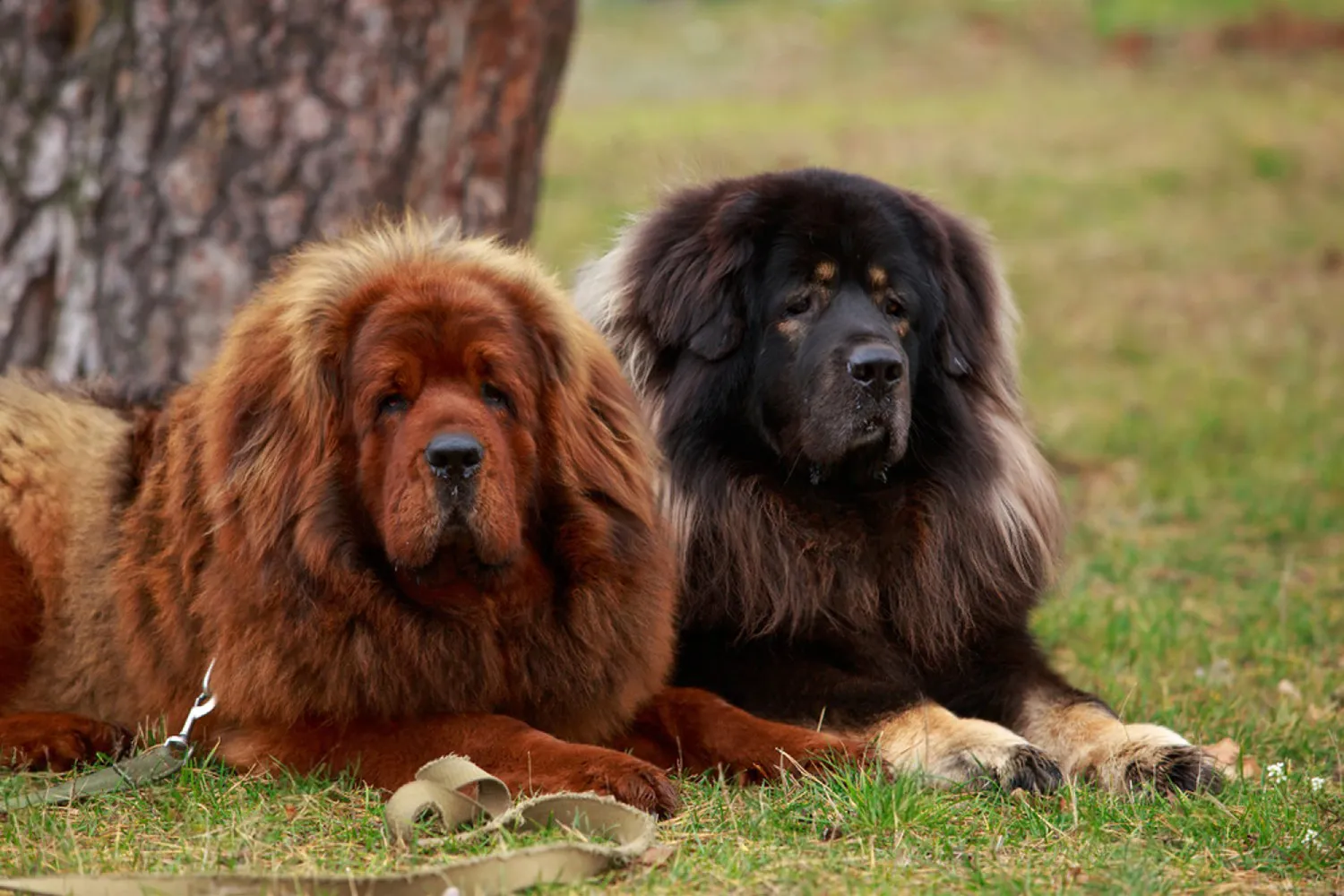
Tibetan Mastiff Grooming & Shedding
Grooming a Tibetan Mastiff isn’t optional it’s part of living happily with this majestic, shaggy roommate. With their gigantic double coat, regular washing and careful drying keep both skin and coat in top shape. I like to think of it like caring for a favorite sweater: when the coat gets dirty, the hair fibers get rough and eventually split, and that’s when you end up with dull, break prone fur. A thorough brush out before a bath, a gentle dog shampoo, and a full dry (right down to the undercoat) make a world of difference. I once made the mistake of letting a damp undercoat air dry after a quick bath hello, musty smell and tangles galore.
Set aside time each week for a good comb and brush session. I use a wide tooth comb to check for tangles and a slicker brush or undercoat rake to manage the fluff. Focus on the hot spots: behind the ears, under the collar, armpits, and the trousers on the back legs. If you skip, those sneaky “spider web” mats can form close to the skin. They’re not just ugly mats pull, trap moisture, and can lead to skin trouble if ignored. During heavy shedding, I brush more frequently and use a high velocity dryer after baths to blow out loose undercoat. It looks dramatic, but it saves hours later.
Bathing should be regular but sensible every few weeks or when your Mastiff gets genuinely dirty. Always brush before bathing so you aren’t washing in knots, and rinse like you’re trying to win a medal for it. Residual shampoo can itch. I check nails, ears, and teeth while I’m at it; it’s a tidy little routine once you get the hang of it. A groomer I trust in Colorado showed me “line brushing” working in small sections from the skin outward which turned a wrestling match into a manageable ritual.
Now, about shedding: yes, Tibetan Mastiffs shed a lot. They usually have one or two big shedding seasons a year, then shed lightly the rest of the time. When the “coat blow” hits, it’s like a snow globe exploded. I remember visiting a friend’s house during her Mastiff’s spring shed and leaving with a free fur coat over my black jeans. Plan on vacuuming more, keep lint rollers by the door, and throw washable covers on favorite dog nap spots. A balanced diet and omega fatty acids can support skin and coat health, but no supplement replaces the brush in your hand.
If you’re new to the breed, get your pup used to grooming early treats, calm praise, short sessions. And don’t hesitate to book a pro during the big shed; two hours on a grooming table can save you two weeks of tumbleweeds.
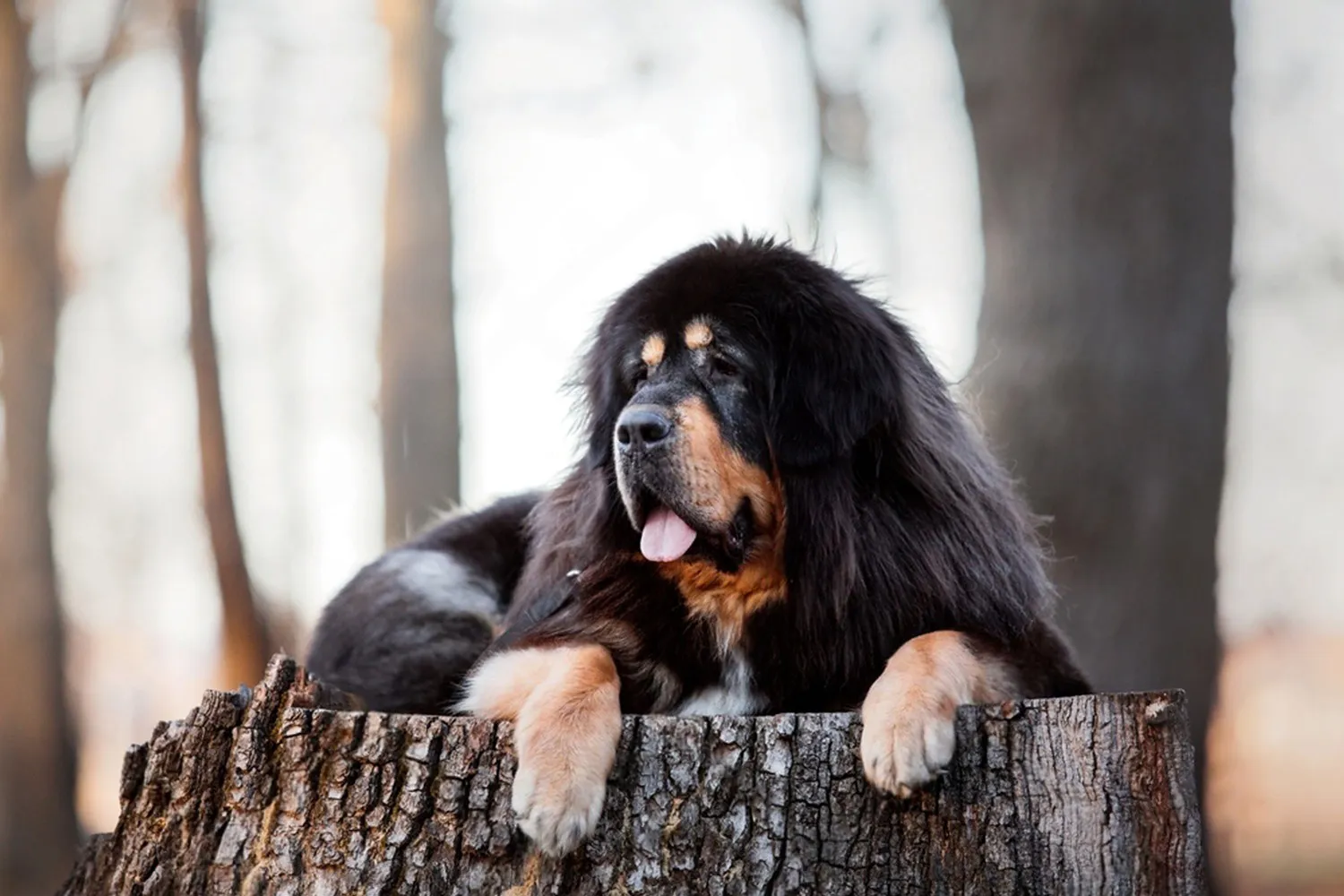
Do Tibetan Mastiffs Bark a Lot?
Short answer: yes when a Tibetan Mastiff lets loose, it’s not a bark so much as a thunderclap. They’re famous nighttime barkers, and that deep, booming voice can rattle windows and startle even the bravest among us. The first time I heard my neighbor’s Mastiff at 2 a.m., I launched out of bed like a cartoon character. It’s part of who they are: a guardian breed with a powerful alarm system that kicks in after dark.
Most of the time, they’re sounding off for a reason perceived danger, a rustle by the fence, a shadow on the porch. But they can also bark out of boredom, loneliness, or simply to get your attention. My friend’s Mastiff, Lobsang, used to “announce” every raccoon that dared step foot in the yard, then followed up with a pointed stare at the treat jar. Smart, stubborn, and very persuasive.
Training helps start early and keep it positive. I like to acknowledge the first alert (“thank you”) and then ask for “quiet,” rewarding even two or three seconds of silence. Gradually stretch that calm time. Don’t scold; it often amps them up. Instead, pay the calm you want to see. Teaching a “speak” cue first can make “quiet” easier, believe it or not.
Set them up for success at night. Bring them indoors, close curtains to block outside movement, and use a fan or white noise. Make sure they’re not bored: a good evening sniffy walk, a puzzle feeder, or a frozen Kong takes the edge off. If howling kicks in with sirens, you can desensitize with low volume recordings and plenty of treats.
Socialization is your friend. The more normal sights and sounds they learn don’t require a full security briefing, the less they’ll escalate later. And be neighbor aware let folks know you’re working on it, and avoid leaving your Mastiff outside overnight where every little thing becomes an alert.
Bottom line: Tibetan Mastiffs are some of the loudest barkers and howlers out there, especially after dark. With consistent, positive reinforcement and smart routines, you can channel that booming voice into a well timed warning instead of an all night concert.
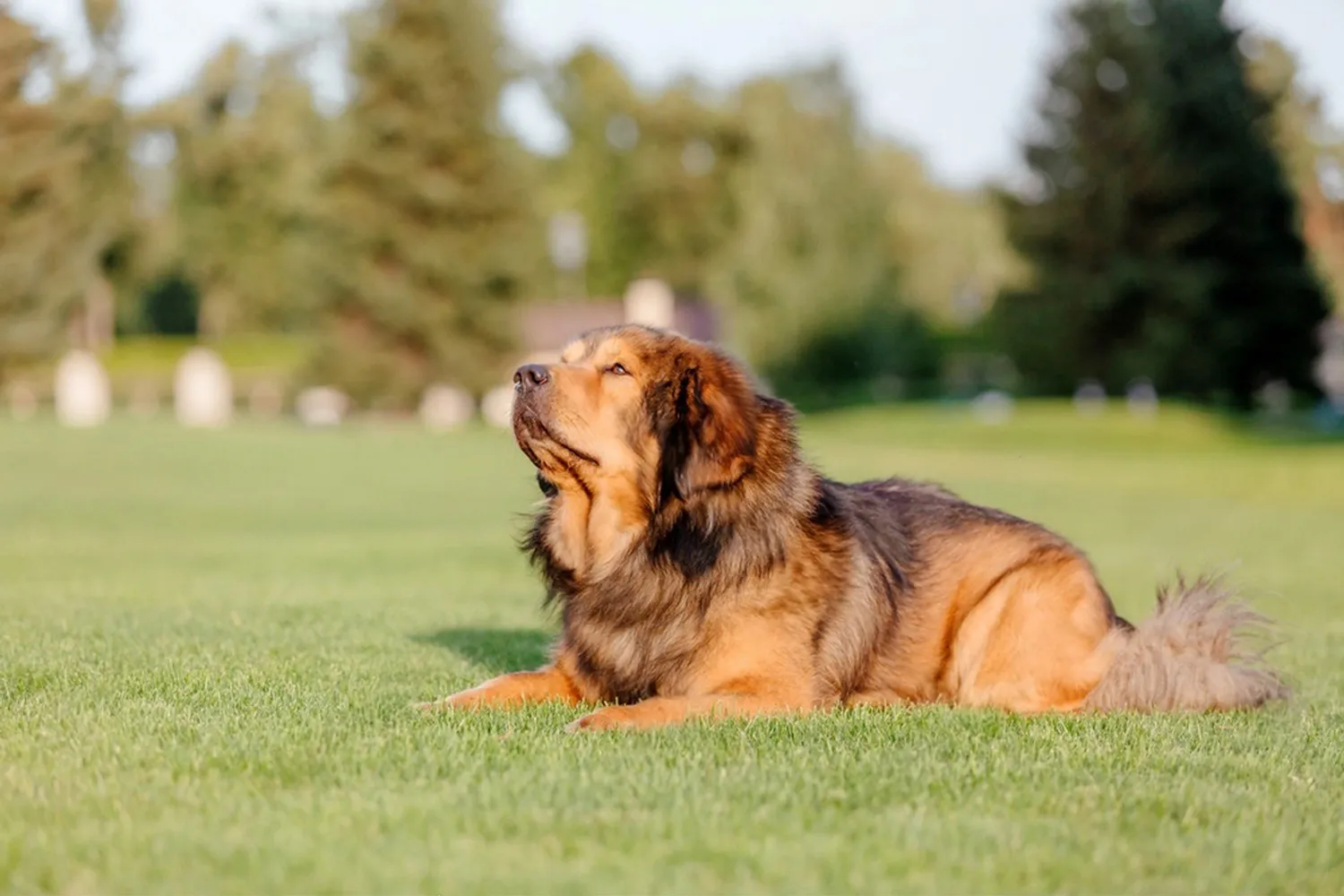
Tibetan Mastiff Size: Weight and Height
Tibetan Mastiffs are hard to miss. That thick, lion like mane makes them look even bigger than they already are, and they carry themselves with a calm, dignified presence. Generally, males are larger than females, and you can see it when they stand side by side same noble expression, just more dog in the male frame.
For the numbers: female Tibetan Mastiffs can stand up to 27 inches (69 cm) at the shoulder and typically weigh around 70-120 lb (31.8-54.4 kg). Males can reach up to 29 inches (74 cm) at the shoulder and come in around 90-150 lb (41-68 kg). That’s a lot of dog. I once met a male named Bear who weighed about 140 pounds and still tried to sit in my lap during thunderstorms trust me, you feel every pound.
A quick tip when you’re measuring: height is taken at the withers (the top of the shoulders), not the head, and the fluffy mane doesn’t count though it does add to the drama. For weighing, I like to hop on the scale with the dog and subtract my weight if we’re not at the vet. And if you’re shopping for gear, think “heavy duty.” A wide, sturdy harness, a bed that won’t pancake, and food and water bowls that won’t skitter across the floor are your friends.
Size can vary from dog to dog, so don’t panic if your pup is a little under or over these ranges. They grow slowly, too. I advise letting them mature at their own pace no intense jumping games on hard surfaces while they’re young. Give them space to stretch out, a secure yard to patrol, and plenty of calm, steady exercise. With a Tibetan Mastiff, you’re not just living with a big dog; you’re sharing your home with a gentle, shaggy guardian who takes up extra room on the rug and in your heart.
https://en.wikipedia.org/wiki/Tibetan_Mastiff
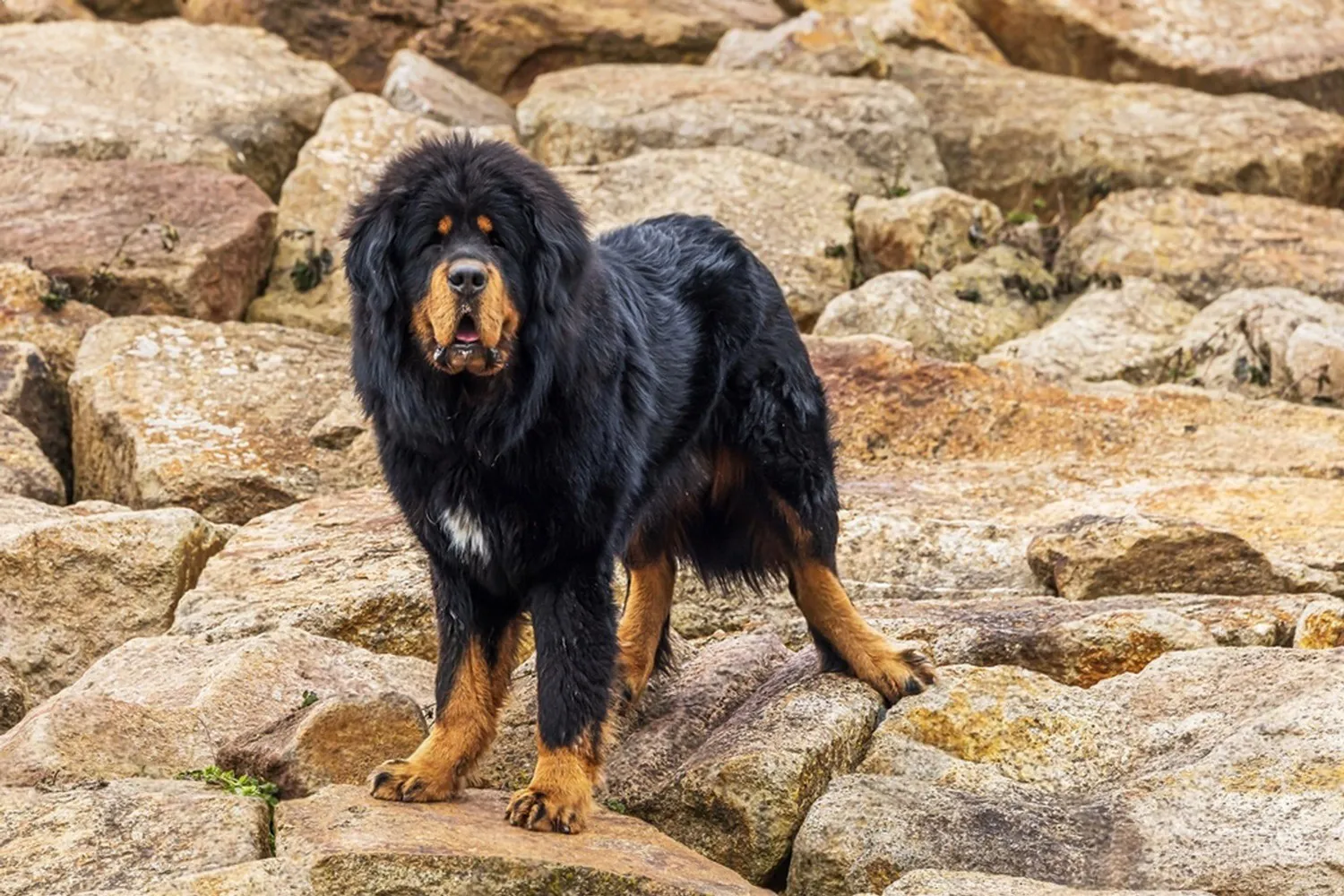
Are Tibetan Mastiffs Easy to Train?
Short answer: they’re smart, but they’re not pushovers. Tibetan Mastiffs are independent thinkers loving, loyal, and a little stubborn so training isn’t “set it and forget it.” Start the day you bring your puppy home. Even at eight weeks, they can soak up more than you’d expect. With my own big fluffball, I began with name recognition, hand targeting, and “sit” before meals. Tiny sessions three to five minutes, several times a day worked best. Keep it calm and consistent, use plenty of praise and high value treats, and you’ll see that thoughtful little lightbulb turn on. Waiting until six months is a bad idea; by then you’ll have a larger, more opinionated dog who thinks he’s already the boss of the house.
If you can, enroll in a puppy obedience class around 10 to 12 weeks and get socialization going as early as possible. Just remember, many classes require current vaccinations (kennel cough included), and lots of vets recommend limiting exposure to other dogs and public places until your puppy’s shots are complete. In the meantime, you can absolutely start at home. Invite vaccinated, dog savvy friends and family over for gentle meet and greets. Carry your puppy to quietly watch the world from your arms or the car. Introduce new sights and sounds umbrellas, doorbells, vacuum noises at a comfortable pace. I used to sprinkle treats on different surfaces (tile, grass, a rubber mat) to build confidence one step at a time.
At home, focus on the essentials: crate training, calm handling of paws and ears, leash skills in the yard, “come,” “leave it,” and “wait” at doors. Practice trade games to prevent resource guarding and teach a “settle” on a mat for those watchful evenings when your Mastiff’s inner guardian wakes up. Keep your yard secure they’re natural sentries and can be vocal then channel that guardian brain into polite behaviors. With early, steady practice and kind boundaries, your Tibetan Mastiff can grow into a wonderfully mannered protector who still has that delightful independent streak…just with better house rules.
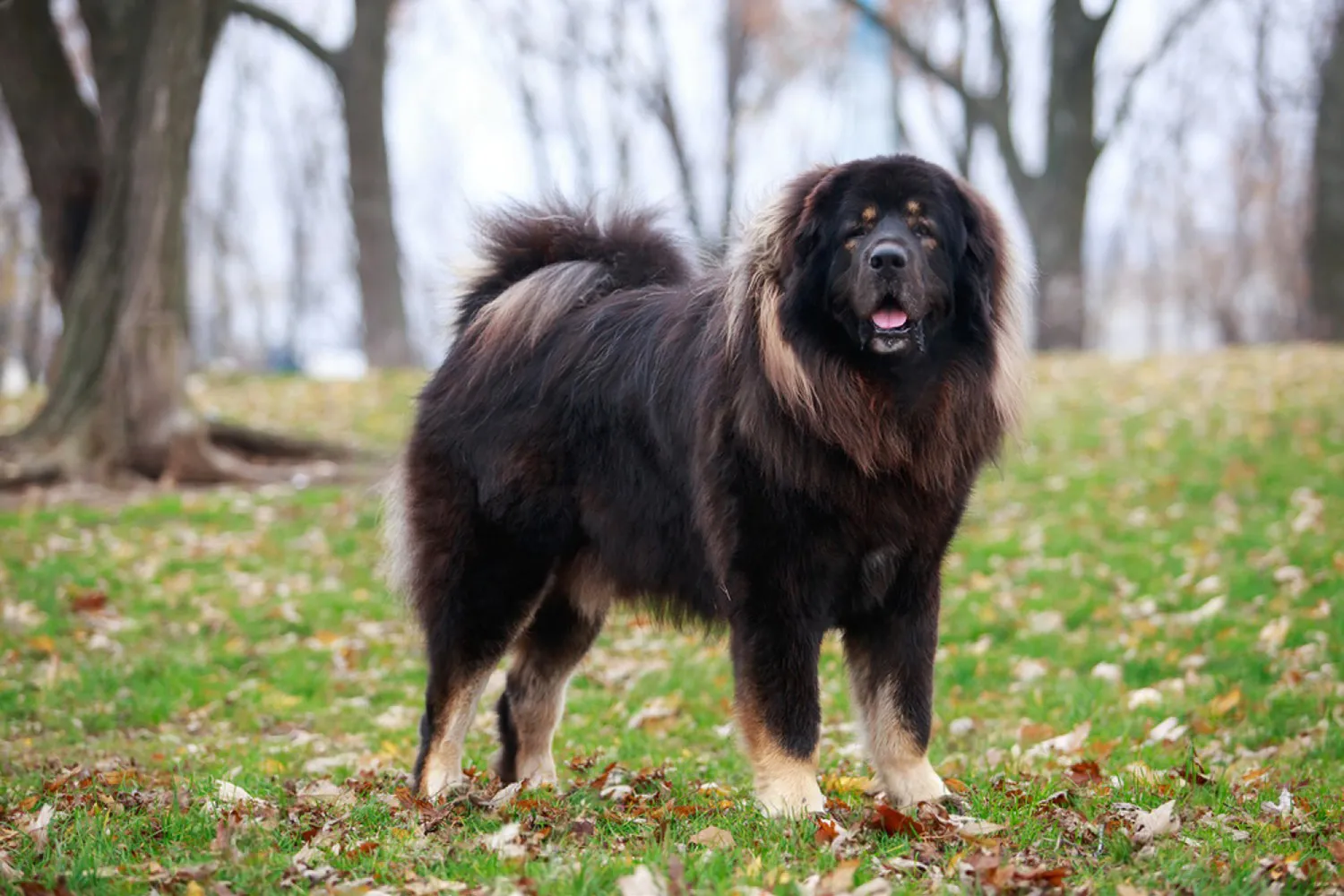
How Do Tibetan Mastiffs Behave? A Look at Their Temperament and Personality
If you’re drawn to the big, fluffy guardian types, the Tibetan Mastiff will catch your eye and then promptly look away as if to say, “I’ll come to you when I’m ready.” These dogs are best for people with patience and real experience. They’re famously independent, a bit stubborn, and very smart, but they use that intelligence to make their own decisions rather than to eagerly follow orders. They take their role as protector seriously of you, your yard, your porch, and sometimes even the breeze that dared to ruffle their fur.
Training a Tibetan Mastiff is less about obedience drills and more about building mutual respect. I once helped a friend with her Mastiff, a massive boy named Dorje. In class, Dorje performed beautifully, hitting every sit and stay like a champ. Back at home, though, he’d look at the same cue, blink slowly, and weigh whether it was really worth his time. That’s the breed in a nutshell: capable, but selectively cooperative. Short, consistent sessions with clear boundaries and meaningful rewards work far better than nagging or repetition. They don’t respond well to harsh methods earn their trust and you’ll get a thoughtful partner, not a resentful bulldozer.
Socialization is essential. Start early, introduce them to different people and environments, and teach them what “normal” looks like. They’re naturally aloof with strangers and often uninterested in making new human friends. That’s not a flaw it’s who they are. With family, they can be deeply loyal and quietly affectionate in their own way, but they’re not typically cuddly lapdogs who crave constant attention. Think companion bodyguard more than velcro shadow. A breeder I spoke with in Colorado mentioned that her dogs liked to patrol the yard at dusk, then come inside and lie down just close enough to keep tabs on everyone, no fuss made.
At home, expect a steady, watchful presence. They can be calm indoors, almost catlike in how they choose their spots and observe the world. Outdoors, their guardian instincts kick in. Secure fencing is a must, and supervision around unfamiliar dogs is wise; they’re not a dog park breed. They also mature slowly, so that teenage “I know better” phase can linger stay consistent and patient. If you have children, teach calm, respectful interactions and always supervise; they’ll protect “their” kids, but their sheer size and seriousness mean clear rules are important.
Bottom line: a Tibetan Mastiff isn’t looking for a boss they’re looking for a partner who understands them. If you value independence, can set firm, fair boundaries, and appreciate a dog who thinks before they act, you’ll find their loyalty extraordinary. And when that big head settles near your feet after a long day of quiet watch, it’s hard not to feel honored by the trust.
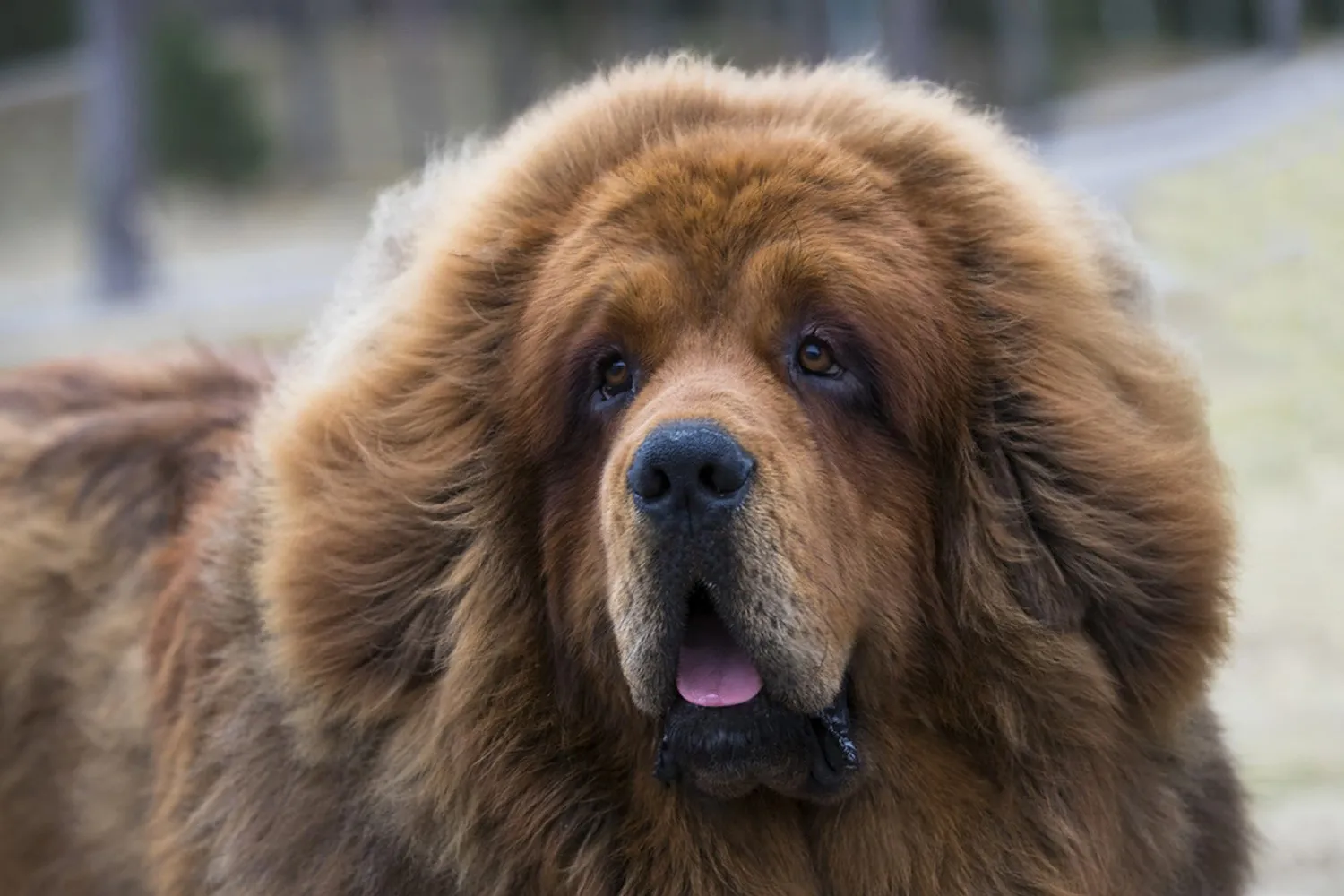
Do Tibetan Mastiffs Have Common Health Issues?
Big, brave, and generally hearty, Tibetan Mastiffs are a sturdy breed but like most large dogs, they do have a few health quirks worth keeping an eye on. The good news is that with smart care, regular vet checkups, and a watchful eye at home, you can stay ahead of most troubles.
Joint health is a big one. Hip and elbow dysplasia can pop up in large breeds, and a Mastiff’s impressive size puts extra stress on those joints. I always tell new owners to keep puppies on a slow and steady growth plan and avoid high impact exercise until they’re mature. Think gentle walks and play on soft ground, not marathon runs or daily stair sprints. If you ever notice stiffness after naps, a bunny hopping gait, or reluctance to jump into the car, it’s time to talk to your vet.
Hypothyroidism is another condition to know. It can look sneaky weight gain despite normal food, a dull coat, shedding more than usual, or just seeming tired. One of my friends caught it early in her Mastiff after she noticed the dog seemed “blah” on walks. A simple blood test confirmed it, and medication made a world of difference.
Eye health matters too. Tibetan Mastiffs can be predisposed to conditions like cataracts and persistent pupillary membranes (PPM). Sometimes you’ll spot a slight cloudiness or your dog might bump into things in dim light. An eye specialist can help monitor changes so nothing gets missed. On the rarer side, there’s a neurological issue called canine inherited demyelinative neuropathy ethical breeders screen for it, which helps keep it uncommon.
Don’t overlook everyday stuff either. Ear infections can creep up, especially if your Mastiff loves a good splash. I do the weekly ear sniff test if it smells yeasty or looks red, we clean and keep an eye on it. Dental disease is another classic; a quick brush a few times a week and some vet approved chews can save a lot of trouble down the road. Seizures and epilepsy are also reported in the breed if you ever see unusual staring spells or twitching, make a note of when it happens and call your vet. And while heart issues aren’t guaranteed, any coughing, exercise intolerance, or fainting spells deserve a prompt check.
Weight management is a big deal for these dogs. They can be prone to obesity, and extra pounds make every other issue worse. I measure meals with a scoop or a kitchen scale (free feeding was a disaster at my house my Mastiff figured out the kibble bin in a week). Portion control, quality food, and daily moderate exercise long, steady walks, some puzzle toys, and calm play are perfect for their bodies and minds.
If you’re working with a breeder, ask about health testing. The American Tibetan Mastiff Association participates in the Canine Health Information Center (CHIC) program. For CHIC certification, the Orthopedic Foundation for Animals (OFA) must evaluate hips and thyroid, and the eyes need to be cleared through an eye registry (CERF). An OFA elbow evaluation is recommended, even if it’s not required. A responsible breeder will happily share these results.
Bottom line: Tibetan Mastiffs are generally healthy, but a little vigilance goes a long way. Keep them lean, move them daily, brush those teeth, peek at those ears, and schedule routine vet checks. Do that, and you’ll stack the odds in favor of a long, comfortable life with your majestic fluff.
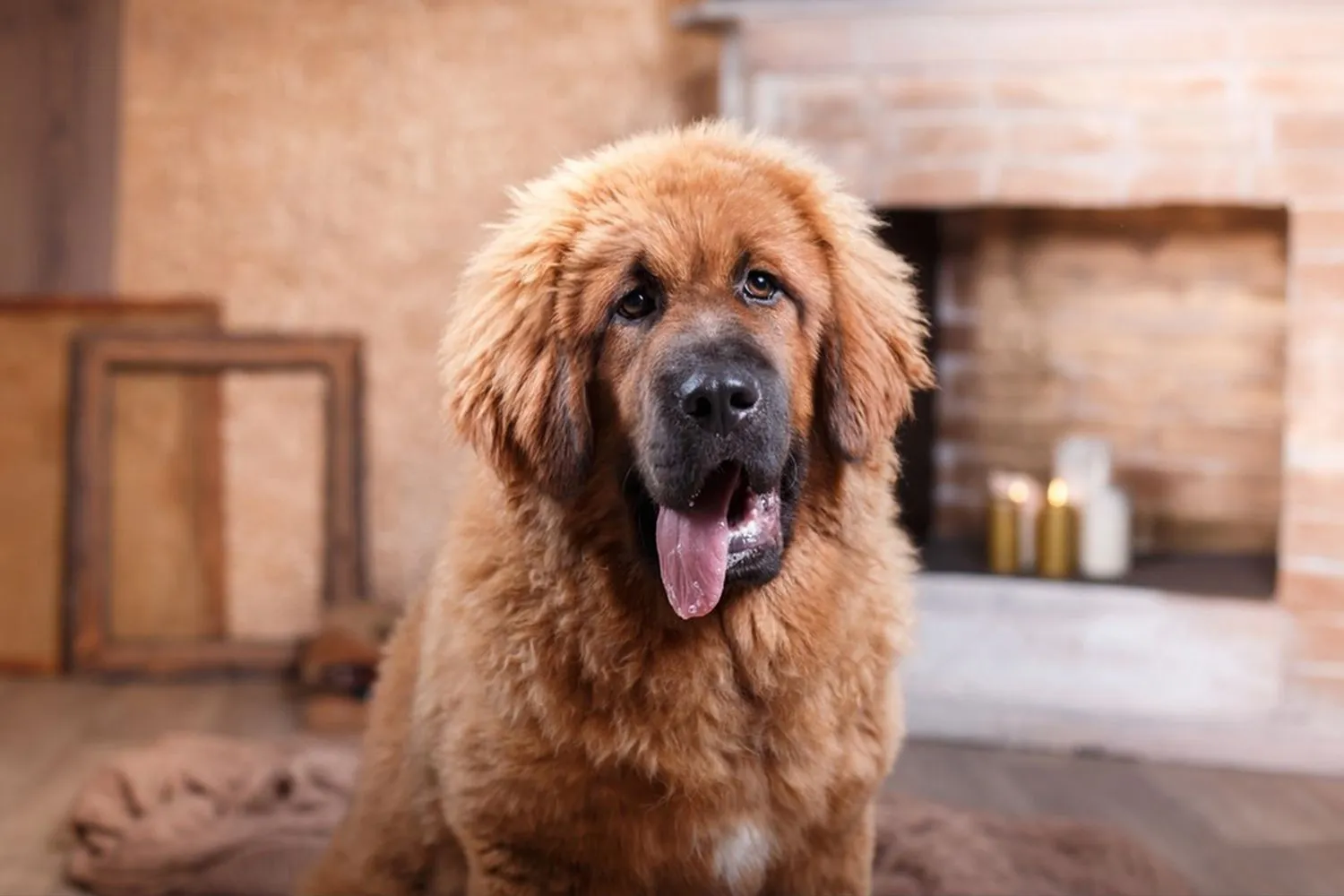
What Is the Lifespan of a Tibetan Mastiff?
Most Tibetan Mastiffs live around 10 to 12 years, which is pretty typical for a large, powerful breed. I had a neighbor whose big, bear like Mastiff made it to almost 13-slow hikes at sunrise, a lean diet, and plenty of naps in the coolest corner of the house were his secret sauce. These dogs mature slowly and carry a lot of weight, so think “steady and sensible” at every life stage.
If you want to help your Mastiff reach the upper end of that range, focus on the basics done well. Keep them slim, not bulky extra pounds are hard on joints and hearts. Feed a high-quality, large breed formula, especially during puppyhood to encourage slow, even growth. Go easy on high impact exercise while they’re still growing, then settle into daily, low impact routines like brisk walks and mellow play. Regular vet checkups, dental care, and joint support (as your vet recommends) go a long way. And don’t forget the weather Tibetan Mastiffs run hot under that glorious coat. Mine used to sprawl on cool tile all summer; early walks and plenty of shade made a big difference. Keep their minds busy with training and puzzle toys, keep their bodies comfortable, and you’ll make those 10 to 12 years full, happy, and wonderfully doggy.
How Much Should a Tibetan Mastiff Eat?
Most Tibetan Mastiffs do well on about four to six cups of food per day. They’re big, but as family pets they’re not usually high octane athletes, so they don’t need much more than that. I like to split the total into two meals breakfast and dinner so their stomach isn’t overloaded at once. My neighbor’s Mastiff, Lobsang, was happiest on five cups a day, and we noticed that keeping meal times consistent made him calmer and easier to manage.
Stick closely to the feeding guidelines on your dog food bag and adjust for your dog’s age and weight. This breed can pack on pounds faster than you’d think, so measure meals instead of eyeballing and keep an eye on their waistline. A simple rule I use: you should be able to feel ribs without pressing hard, but not see them. Go easy on extras treats should stay a small portion of the daily intake. I also avoid free feeding; it’s too easy for a Tibetan Mastiff to wander by the bowl and snack their way into obesity.
Choose a high-quality kibble that’s formulated for large or giant breeds. Scan the ingredient list for real meat protein, healthy fats, fiber, omega fatty acids, plus essential vitamins and minerals. If you’ve got a puppy, look for a large breed puppy formula to support steady growth. One tip from my own routine: I check the calories per cup on the packaging because different brands vary, and that helps me keep portions consistent. Fresh water, a slow feeder if they rush meals, and a few quiet minutes before and after eating round out a solid feeding routine.
Tibetan Mastiff FAQs
Are Tibetan Mastiffs rare?
Yes they’re a rare breed, and usually an expensive one. Reputable breeders often have waitlists, and you’ll see far fewer Tibetan Mastiffs than popular guardian breeds at parks or shows. One variant, the Red Tibetan Mastiff, is especially scarce and famously pricey. I remember spotting a red one at a dog show once; it was like a celebrity had walked in everyone drifted over for a look, and the dog took it all in with that regal, unbothered calm.
Do Tibetan Mastiffs suffer from separation anxiety?
They can. Despite their independent streak, these dogs bond deeply with their people. Many do best when they have a compatible companion dog at home, which can ease stress and give them a sense of “pack.” If you’re worried about anxiety, start independence training early: short, calm departures, a predictable routine, and plenty of mental work. I’ve had good luck with food puzzles and frozen stuffed toys right before I leave by the time the treat is gone, I’m out the door and they’re relaxed.
Can Tibetan Mastiffs be left alone?
They really don’t like long stretches solo. If pushed past their comfort zone, you might come home to chewed furniture or a barking report filed with your neighbors. Build up alone time gradually, and make sure their needs are met first: a solid exercise session, a potty break, then something engaging to do. Rotate tough chews and puzzle feeders, use baby gates to set a safe, quiet zone, and consider a midday dog walker for longer days. A friend of mine saw a huge difference after hiring a walker less pent up energy, fewer complaints from the apartment next door.
How many puppies does a Tibetan Mastiff have?
Typical litters range from six to twelve puppies. It’s a big breed, so big litters aren’t unusual, but responsible breeders put in serious work to monitor mom and pups. If you’re on a waitlist, don’t be surprised if placements are thoughtful and slow these dogs mature at their own pace, and good breeders take their time to find the right homes.
Disclaimer:
This article is for informational purposes only and doesn’t replace professional veterinary or training advice. Always consult a certified vet or dog trainer for guidance specific to your pup.
